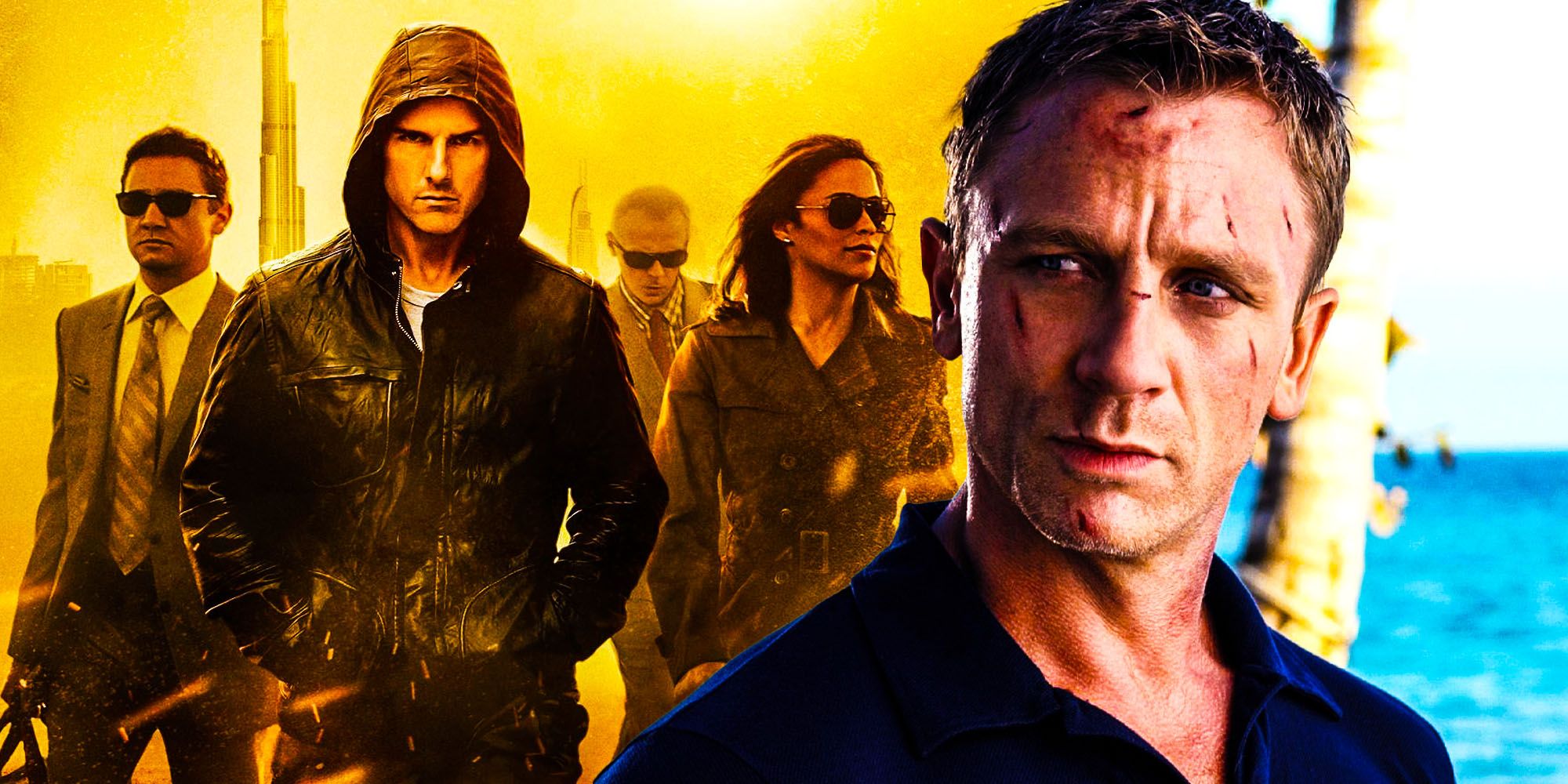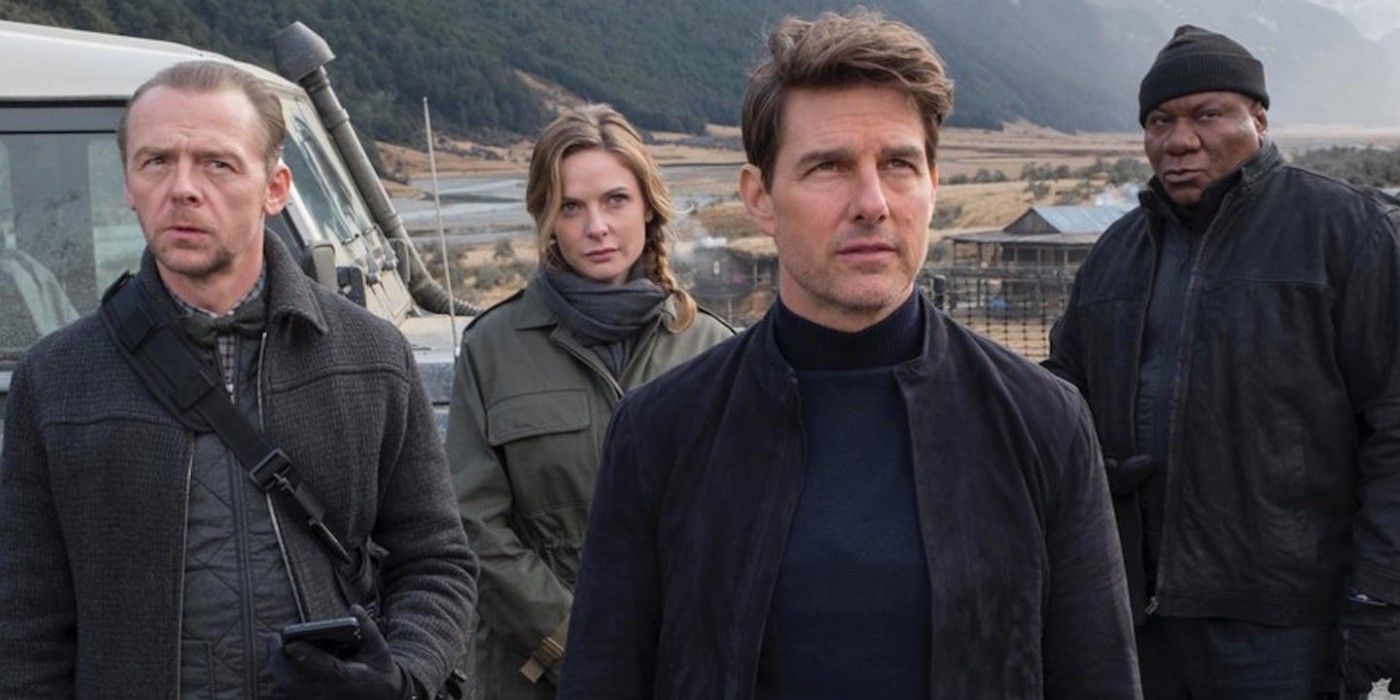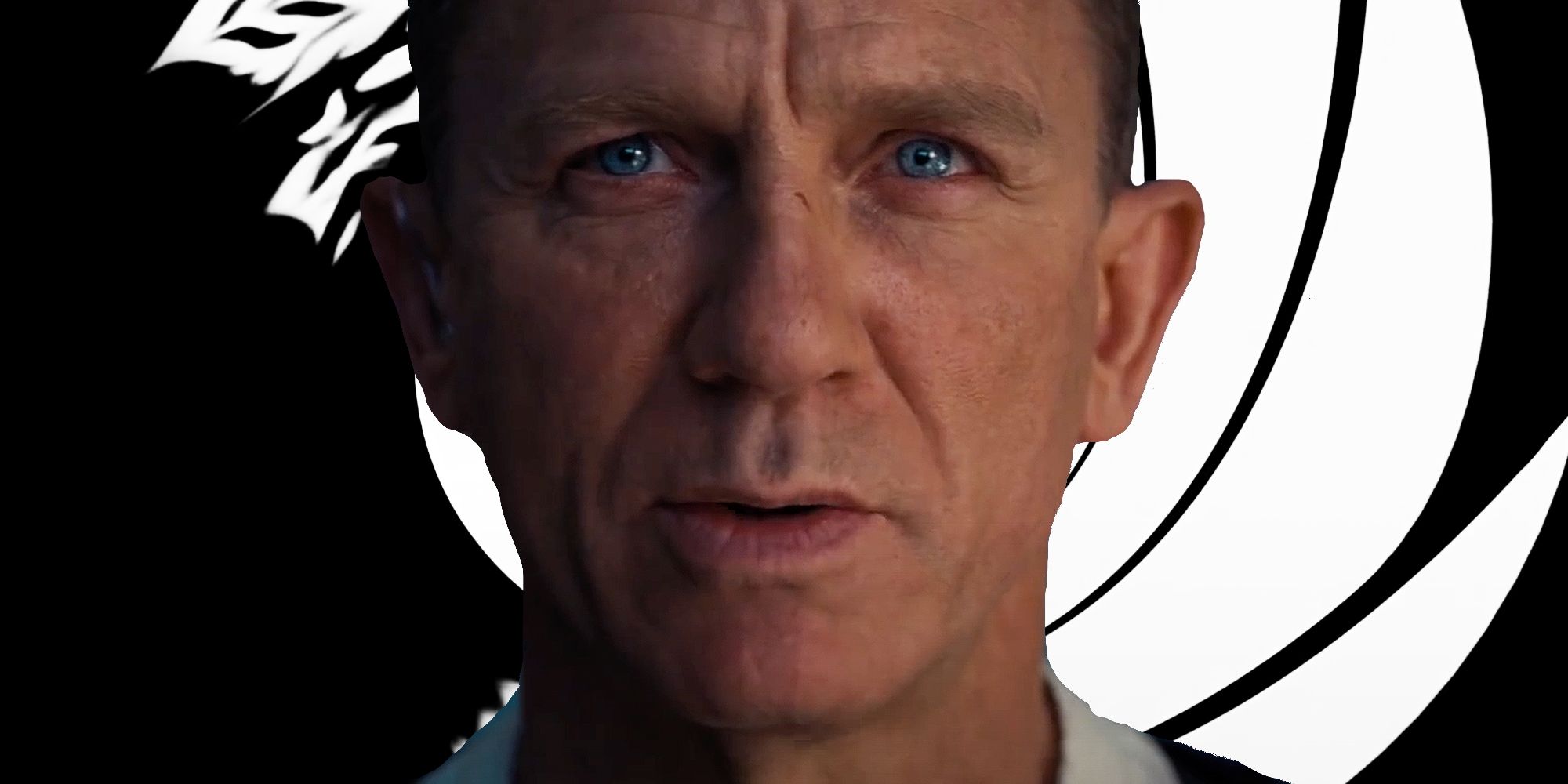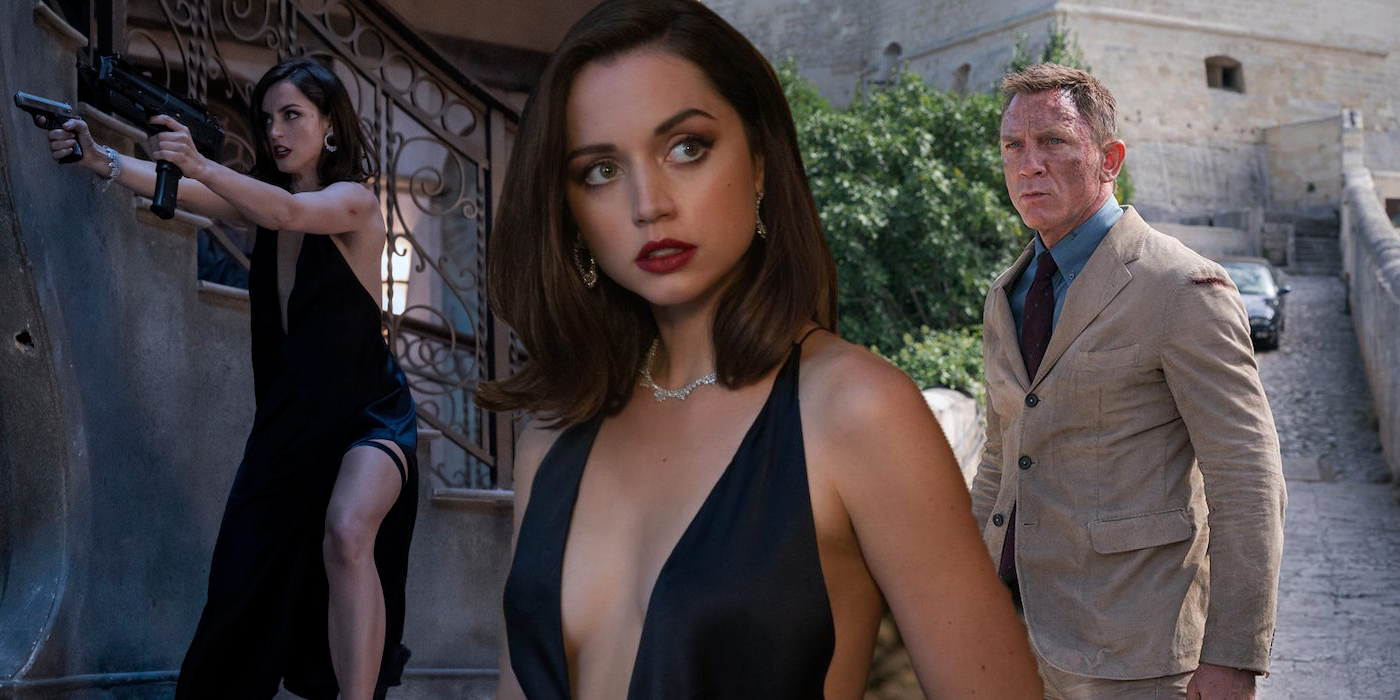What The James Bond Franchise Can Learn From Mission: Impossible

Now that No Time To Die has ended Daniel Craig’s reign as 007, the James Bond franchise has a lot to learn from the Mission: Impossible films going forward. Beginning in 1962 with Dr. No, the James Bond franchise has been one of spy cinema’s most beloved institutions for decades. What the Double-O movies have not been, however, is consistent.
While the arrival of the campy Bond villain Safin meant No Time To Die brought back a lot of the franchise’s more over-the-top appeal, the early Daniel Craig Bond outings were self-serious, Bourne-style thrillers. These intense and gritty movies bore little resemblance to Pierce Brosnan’s goofy, self-parodic Bond outings of the 1990s and early 2000s, which in turn were strikingly different from Timothy Dalton’s short-lived, darker take on the part. In contrast, the Mission: Impossible franchise has managed to stay much more consistent in its themes and storytelling.
Based on a 1960s television show of the same name, the Mission: Impossible franchise has been going strong with very few wobbles since it began in 1996. Despite the movies having to keep up with the action trends of their day—meaning Mission: Impossible 2 features over-the-top slo-mo while Mission: Impossible 3 has endless shaky-cam sequences—each movie has received successively better reviews than the last. Tom Cruise’s only franchise is spy cinema’s biggest financial success, too, managing to dethrone Bond despite stiff competition. In contrast, both the Pierce Brosnan and Daniel Craig eras of James Bond, which spanned about the same time period, have struggled with critics and fans. Luckily, there is a lot that Bond can learn from the Mission: Impossible franchise, and many of the requisite changes can be made as the franchise casts a new 007.

A huge element of the Mission: Impossible franchise’s appeal is its large, diverse cast. Even though Cruise is inarguably the star of the series, the Mission Impossible movies have been quietly building up a stable of dependable supporting characters with each new installment. Even Cruise’s other upcoming blockbuster Top Gun Maverick is stealing Mission: Impossible’s approach, as a bigger cast means more characters for fans to care about, more potential spinoffs, and a more immersive fictional world. The current era of franchise movies is team-oriented, not focused on a single individual, as epitomized by the success of the sprawling Marvel Cinematic Universe.
Fortunately for 007 fans, Bond already has a built-in team thanks to the supporting stars at MI6. Viewers come to 007 movies hoping to see the hero flirt with Miss Moneypenny, get orders from his boss M, and bother the resident gadget-maker Q. In many ways, the earlier incarnations of Bond informed the supporting cast of the Mission: Impossible series, which borrows the “geeky tech guy” and “battle-hardened boss” from the earlier spy franchise. With No Time To Die giving Q a bigger role in the action and 007’s replacement Naomi a sizable part to play, it is clear the series knows how to pull off an ensemble spy story. Now, the franchise simply needs to borrow Mission: Impossible’s approach and put these supporting stars front and center alongside its hero.

Ethan Hunt has often allowed himself to be emotional on-screen—crying, losing his cool, and showing fear in each Mission: Impossible movie. In contrast, even the most realistic recent incarnations of James Bond rarely show the character’s human side. The Daniel Craig era has changed that somewhat, but it's hard to connect with a character who is so cool and reserved when Hunt offers a more human, but no less badass, version of spy heroics. Borrowing from Bourne let Craig’s Bond show how traumatized he was by the death of Vesper Lynd and the senselessness of his job’s body count, but this element was played down as the Craig movies transitioned into the campier, more traditional side of Bond territory.
Depicting Bond acting like an emotionally adjusted human doesn’t mean the franchise needs to be a heart-wrenching and realistic look at the world of international espionage, however. The Mission: Impossible movies have absurd plots that hinge on ludicrous, over-the-top villains, but they work because Ethan Hunt can emote within the context of these admittedly silly stories. Cruise’s fear that he or his team will die on the job makes the adventures more gripping despite their goofiness, and as Bond potentially becomes more fun with Craig gone, the franchise needs to find that balance between heightened heroics and (relatively) realistic emotion.

Though the Daniel Craig era has been somewhat better with this, there are still some lingering issues with sidelining female characters and reducing them to props in the Jame Bond franchise. For example, the novel version of Casino Royale’s Vesper Lynd tragically commits suicide, while her on-screen counterpart is reduced to the "Woman in Refrigerator" role of being killed off solely to further Bond’s story. In contrast, the Mission: Impossible movies have largely been respectful of love interests, even giving Julia (Michelle Monaghan) a great new life in Mission: Impossible - Fallout. As proven by Ana De Armas’ Paloma in No Time To Die, the Bond franchise is more than able to create convincing, interesting female characters who don’t exist solely to fall in love with Bond, be killed off brutally, or both.
The Mission: Impossible movies have given stellar parts to Rebecca Ferguson’s Ilsa Faust and Vanessa Kirby’s White Widow, since the franchise is not worried about its central star being shown up. The James Bond franchise has cinema’s most enduringly popular leading man as its hero, meaning there is no reason for the creators to worry about him being forgotten amidst impressive, scene-stealing co-stars. Whether the next Bond is Idris Elba, Daniel Kaluuya, Tom Hardy, or anyone else, the character should be seen alongside engaging, well-rounded female characters comparable to Kirby and Ferguson’s M.I. antiheroes. Adding these characters in could round out the James Bond franchise’s lineup and allow the series to finally compete with its biggest rival—the Mission: Impossible franchise.
Source: Screenrant
Post a Comment